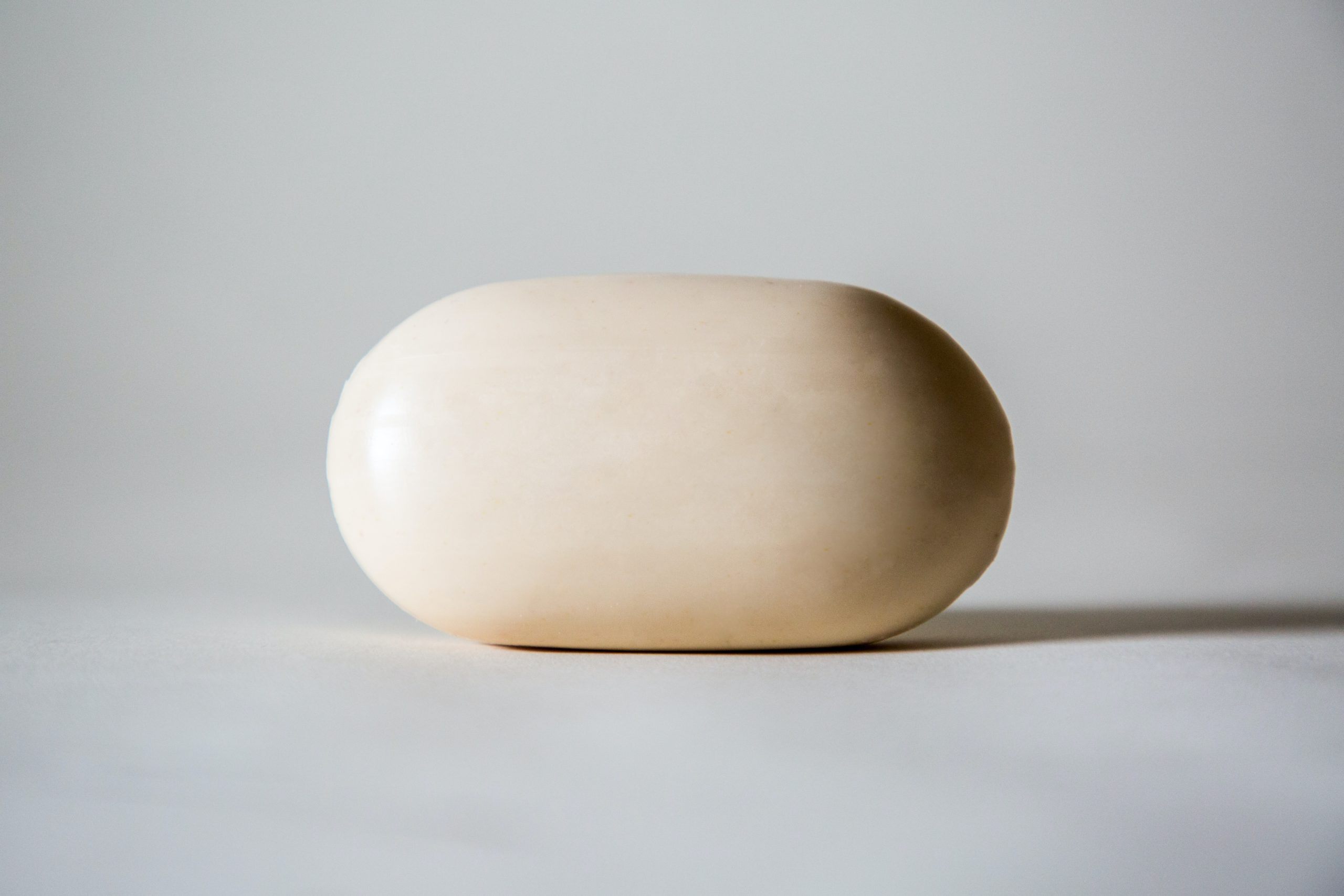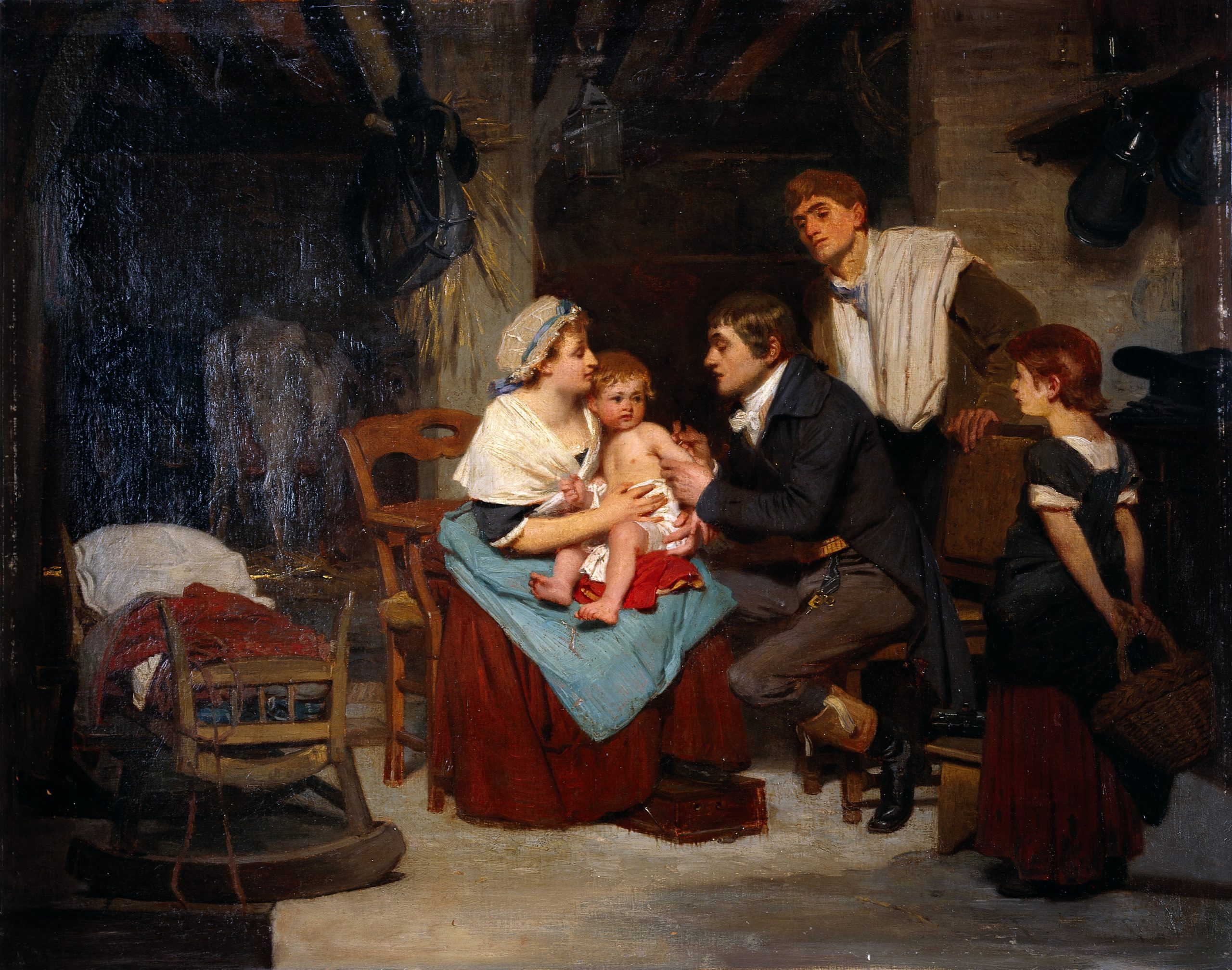In this Vaccine series, we look at the history of inoculation and the importance of smallpox in this chronicle.
The chronicle of vaccines started way before Edward Jenner’s innovation on vaccinations in the 18th century. Humanity and disease share a long and eventful history. In particular, smallpox has had a major impact on the evolution of vaccines.
HISTORY OF SMALLPOX
One of the most influential factors that shaped the course of human history is inarguably smallpox.
Smallpox is a fatal infectious disease that had claimed many countless casualties throughout human history. It is believed to have emerged around 10,000 BC in Africa. The earliest evidence of smallpox is found on the faces of 3000 years old mummified body of the pharaoh Ramses V in Egypt.
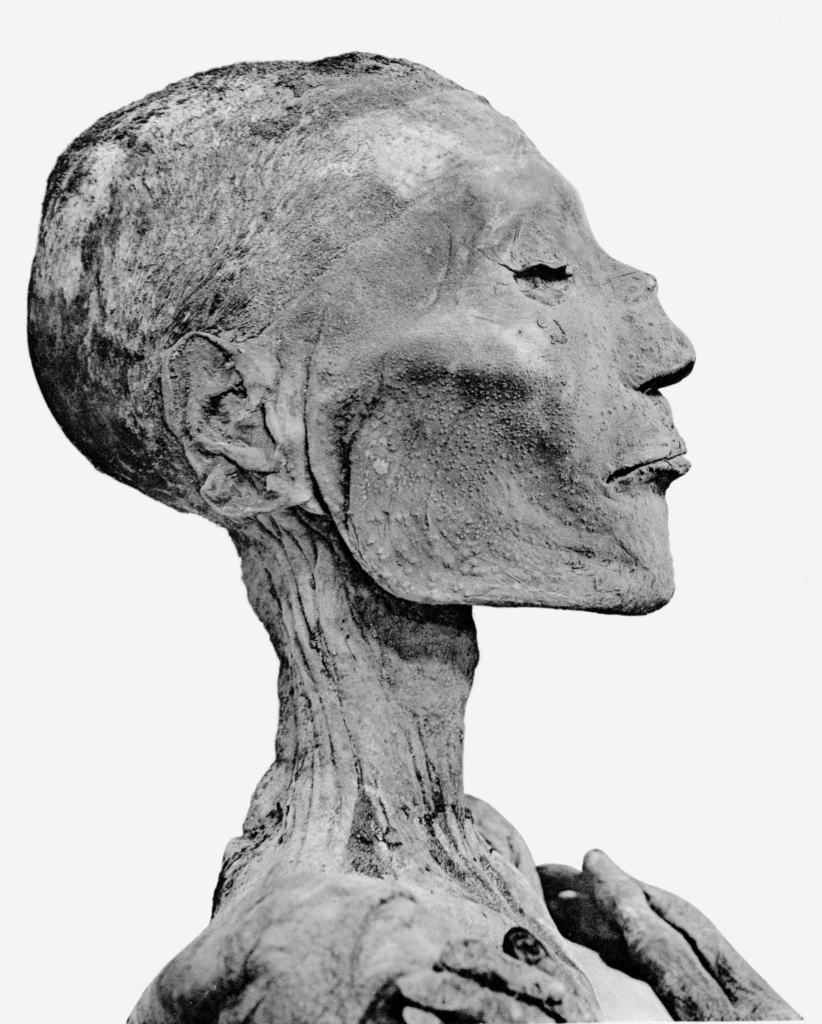
Credit
As traders from Egypt traveled, they brought smallpox with them and introduced to India and then to China during the 1st century AD. A Chinese medical book in the 4th century AD described the symptoms of smallpox including the formation of pustules on the victims’ faces and bodies.
It had spread to Japan in the 6th century and continued its way throughout Europe in the 11th and 12th centuries through the crusaders. In 1518, Spanish conquistadors brought with them smallpox to the New World. Lacking immunity to the Old World’s disease, more than one-third of all Aztecs fell victim to horrific plagues of smallpox. At the time, the Aztec Empire had about 30 million people. It was estimated that only 3 million people remained by 1568. The spread of smallpox didn’t stop there as the efforts of colonization and explorations continued.
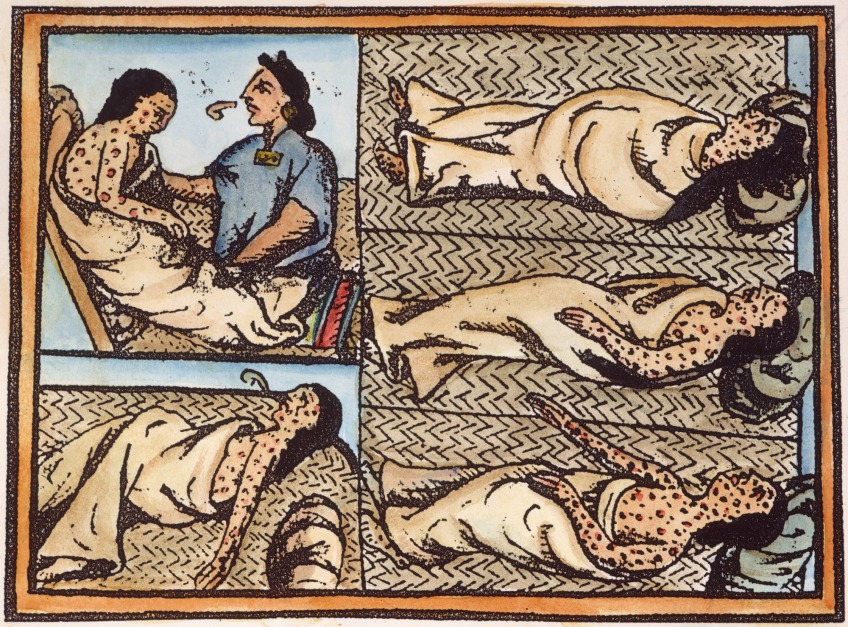
Credit: Granger Collection, New York
Smallpox can be spread from person to person through small droplets from coughs and sneezes. It can also be spread by direct contact with blister fluids and contaminated blood. An infected person will typically develop a sudden onset of high fever, skin rashes, body ache, vomiting, and diarrhea. The most iconic symptoms of smallpox are the formation of fluid-filled blisters which will turn into scab once drained and dried.
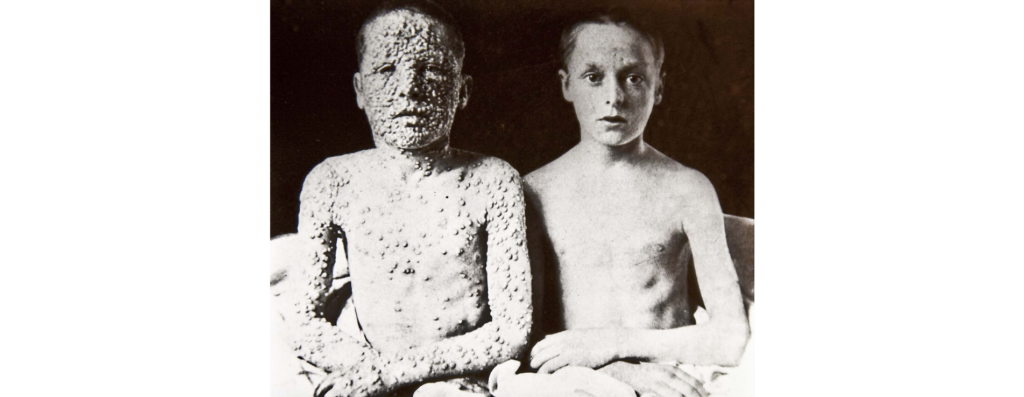
Credit: The Historical Medical Library of The College of Physicians of Philadelphia
Epidemics of this disease had destroyed armies and civilizations across continents. Those who lived to tell the tale were often left disfigured and suffered disabilities for the rest of their lives. In the 20th century, an estimated 300 million people had died from smallpox. We may never know the true fatality of smallpox as it had co-existed with the human race for thousands of years. As of the 8th of May 1980, the world is rid of smallpox, thanks to the Global Smallpox Eradication Program by World Health Organization (WHO) started in 1959.
ORIGIN OF INOCULATION
Inoculation refers to the act or process of inducing immunity by introducing infectious agents into a living organism. Inoculation was previously called variolation, named after the virus responsible for causing smallpox, variola virus.
The oldest reference of variolation dates back to about 1000 AD during the Chinese Song and Liao Dynasties although some sources claim much earlier dates to around 200 BC.

Credit: The Historical Medical Library of The College of Physicians of Philadelphia

Credit: The Palace Museum / Public domain
The method of variolation involved collecting smallpox scabs, grinding them into powder and administered by blowing the powder into nostrils through a blowpipe. This method is called nasal insufflation. Another method involved introducing fluid from pustules into superficial scratches on the skin of a person being inoculated.
Variolation gained royal endorsement in 1661. During his reign, Emperor Kang Xi, a survivor of smallpox himself supported variolation. In his letter to his descendants, he boasted the success of variolation saving the lives and health of millions of men.
A MERCILESS TALE

Credit: Wellcome Library, London
The age of exploration and colonization enabled the transmission of diseases across continents. In 1545, the Portuguese introduced and brought on a smallpox epidemic in India; French Jesuits brought together with them smallpox upon their arrival in Canada and the disease would soon wipe out Native Americans; Life nearly came to a standstill as a series of deadly diseases introduced by the early settlers claimed victims in the US.
History proves that deadly diseases including measles, yellow fever, smallpox, typhoid fever, diphtheria, etc. know no boundaries, no social hierarchy, and no mercy. Kings, Queens, nobilities, and paupers alike fell victim to diseases. The most notable deaths include that of Queen Mary II of England, Czar Peter II of Russia, and Chinese Emperor Fu-lin.
SPREAD OF VARIOLATION
Despite being practiced in Asia and Africa for centuries, variolation didn’t spread to Europe until the early 1700s. In the early 1700s, Dr. Emmanuel Timoni of Constantinople wrote an article describing the practice of variolation in Constantinople (present-day Istanbul, Turkey). Through the article, Lady Mary Wortley Montagu, the wife of the British Ambassador to the Ottoman Empire, learned about variolation upon her arrival in Turkey. She would later have her son variolated while in Turkey. She continued to promote variolation upon her return to England. Variolation quickly gained popularity in England and across Europe.

by Achille Devéria, printed by François Le Villain, published by Edward Bull, published by Edward Churton, after Christian Friedrich Zincke hand-colored lithograph,1830s NPG D34619
Meanwhile, Cotton Mather, a Puritan minister in Boston also learned of the article on variolation by Dr. Timoni. Mather adopted the method and implemented variolation practice during a deadly smallpox outbreak in Boston in 1721.
At the time, variolation was not well received among those who argued that this method was against religious teachings. Despite opposition, variolation gained the support of surgeons and those like-minded. Benjamin Franklin, one of the founding fathers of the United States was an advocate for variolation. Variolation soon gained widespread acceptance in the US.
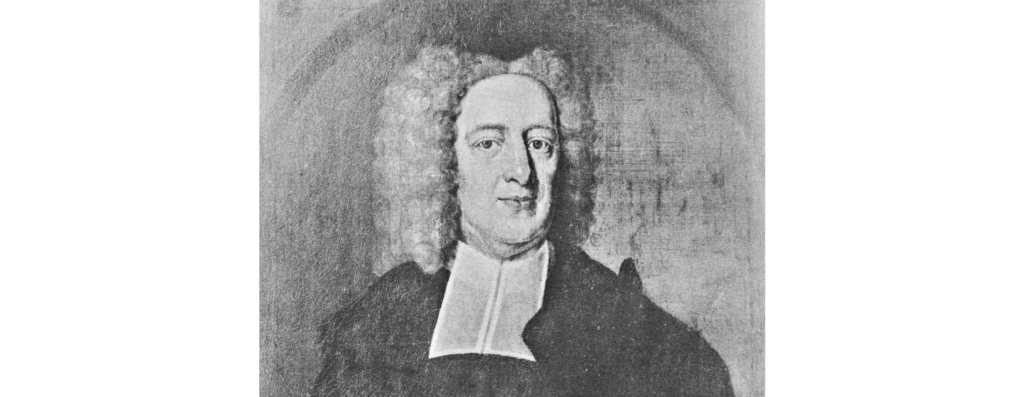
Credit: The Historical Medical Library of The College of Physicians of Philadelphia
Variolation was the best method at the time against merciless smallpox.
Although the history of vaccines doesn’t revolve around smallpox alone, this disease played an important role.
It became clear that understanding the principles of infectious diseases was at the core of developing new treatment and prevention.
In 1749, Edward Jenner was born in Berkeley, in Gloucestershire, England. His innovation almost half a decade later would become his legacy. And his breakthrough would be the real game-changer for mankind.
Stay tuned for Vaccine series Part 2 on the life of Edward Jenner.


